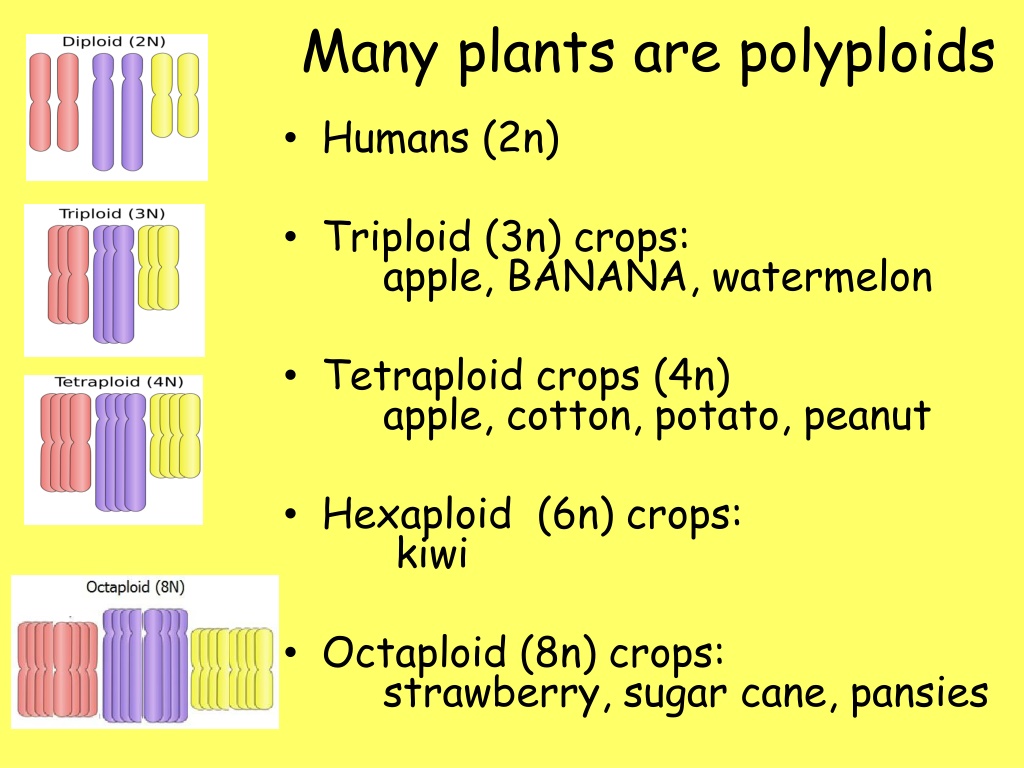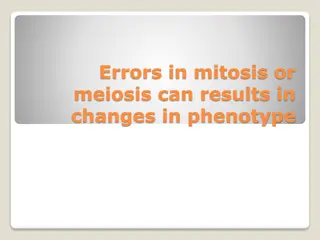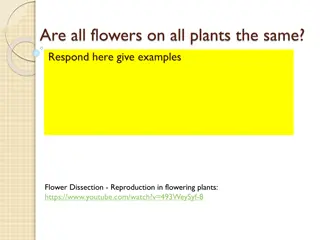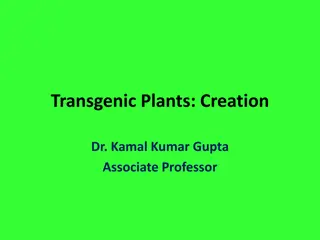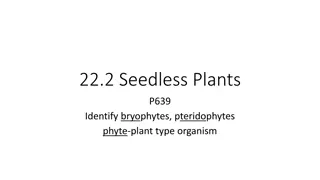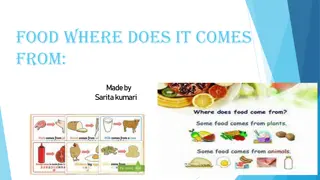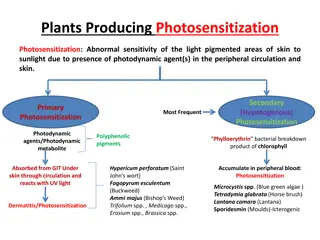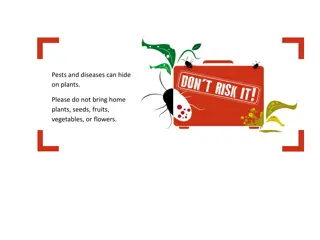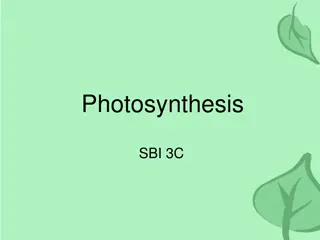Understanding Polyploidy in Plants: Implications and Techniques
Polyploidy is common in plants, with various crops like apple, banana, and watermelon displaying different levels of ploidy. This phenomenon influences characteristics and breeding strategies. Techniques like crushing bananas to separate cells, using hypotonic water to swell cells, adding salt to aid DNA molecule interactions, and utilizing cold alcohol to collect DNA are employed in studying polyploidy in plants.
Download Presentation

Please find below an Image/Link to download the presentation.
The content on the website is provided AS IS for your information and personal use only. It may not be sold, licensed, or shared on other websites without obtaining consent from the author. Download presentation by click this link. If you encounter any issues during the download, it is possible that the publisher has removed the file from their server.
E N D
Presentation Transcript
Many plants are polyploids Humans (2n) Triploid (3n) crops: apple, BANANA, watermelon Tetraploid crops (4n) apple, cotton, potato, peanut Hexaploid (6n) crops: kiwi Octaploid (8n) crops: strawberry, sugar cane, pansies
Crushing the bananas helps separate cells Hypotonic water helps cells swell bigger.
http://qph.is.quoracdn.net/main-qimg-591994777746e06889e0ea0c87eb4da2?convert_to_webp=truehttp://qph.is.quoracdn.net/main-qimg-591994777746e06889e0ea0c87eb4da2?convert_to_webp=true WHY? Adding SALT (Na+Cl-) helps DNA molecules with NEGATIVE charges stick together. Soap -helps break down cell membranes and release DNA
Cold alcohol helps the DNA precipitate (come out of solution) so it can be collected.
